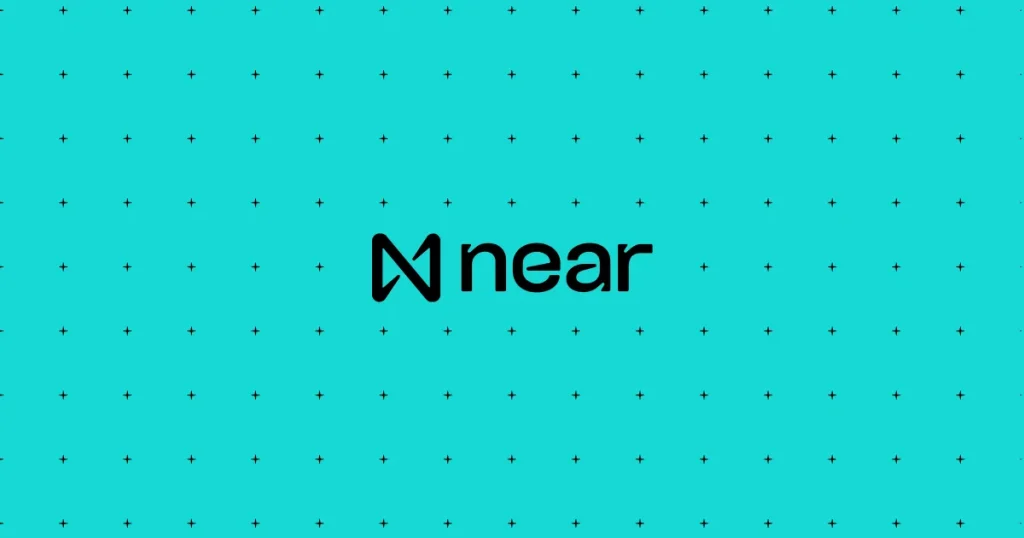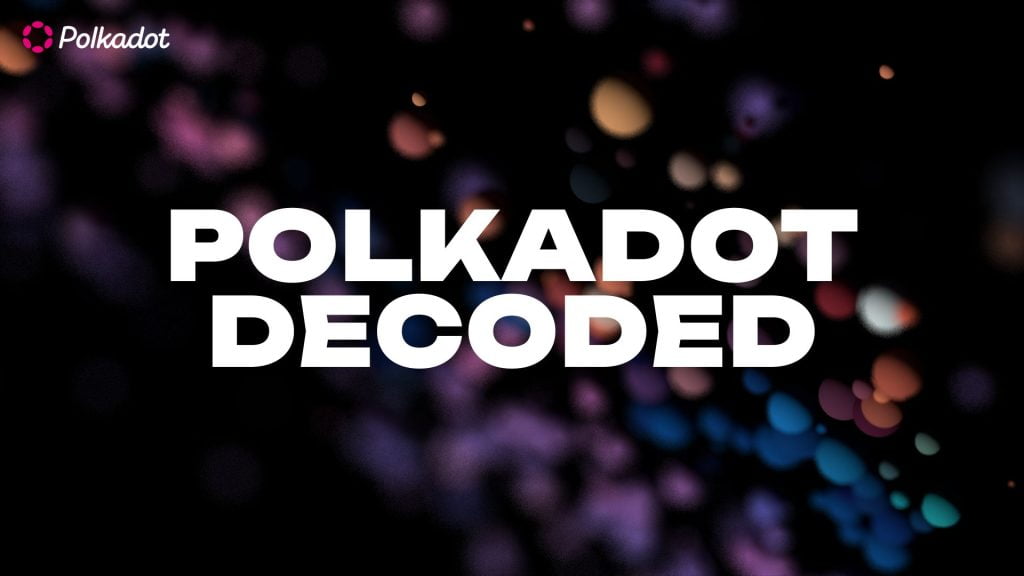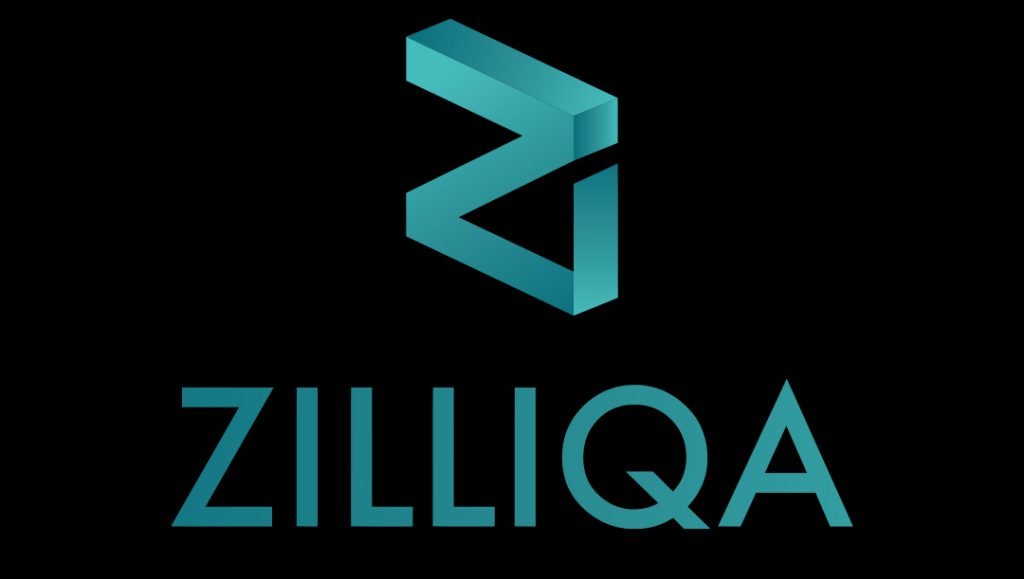Introduction
Sharding technology has revolutionized the blockchain industry by addressing scalability issues, and investing in the best sharding cryptocurrency can provide significant returns. Sharding is a technology that divides the blockchain network into smaller parts or shards, allowing for faster transaction processing and increased network capacity. If you’re looking to capitalize on this innovative technology, here are some key takeaways to keep in mind:
Key Takeaways:
- Ethereum, NEAR, Polkadot, and Zilliqa are leading projects in implementing sharding technology.
- Ethereum’s Beacon Chain plays a crucial role in managing the proof-of-stake protocol and integrating with shard chains.
- NEAR is a sharded proof-of-stake blockchain that enables real-time cross-shard transactions, improving transaction speed and efficiency.
- Polkadot achieves distributed database sharding through parachains, allowing for parallelizable computations.
- Zilliqa executes single-shard transactions in parallel, maximizing transaction speed and scalability.
Understanding Sharding and its Importance in Blockchain
Sharding is a groundbreaking technology that partitions a blockchain network into smaller parts called shards, enabling higher transactions per second and improved scalability. As blockchain continues to gain popularity, the need for faster and more efficient networks has become increasingly apparent. Sharding addresses this challenge by distributing the workload across multiple shards, allowing for parallel processing and significantly increasing the network’s capacity.

By dividing the blockchain into smaller segments, each shard can process transactions independently, reducing the burden on the main network. As a result, sharding enhances scalability by increasing transaction throughput and reducing network congestion. This technology opens up new possibilities for blockchain applications, making it more feasible to handle a high volume of transactions in real-time.
In the context of a blockchain network, scalability refers to its ability to handle a growing number of transactions without compromising speed or performance. Sharding plays a pivotal role in achieving scalability by enabling the network to scale horizontally, distributing the workload across multiple shards. This approach allows for parallel processing of transactions, significantly improving the network’s capacity to handle a higher volume of transactions simultaneously.
The Advantages of Sharding in Blockchain:
- Higher transaction throughput
- Improved scalability
- Reduced network congestion
- Increased processing speed
- Enhanced efficiency and performance
With the importance of scalability in the blockchain industry, several leading projects have embraced sharding as a solution. Ethereum, NEAR, Polkadot, and Zilliqa are at the forefront of implementing sharding technology, each with their unique approach. These projects aim to revolutionize the blockchain landscape by addressing its scalability limitations and creating a more robust and efficient network for the future.
As blockchain technology continues to evolve, sharding represents a significant step forward in addressing scalability challenges. By partitioning the network into smaller, manageable shards, we can unlock the full potential of blockchain and enable faster, more efficient transactions. With projects like Ethereum, NEAR, Polkadot, and Zilliqa leading the way, the future of blockchain scalability looks promising.
Leading Sharding Cryptocurrencies: Ethereum, NEAR, Polkadot, and Zilliqa
Several cryptocurrencies have embraced sharding to enhance their blockchain protocols, with Ethereum, NEAR, Polkadot, and Zilliqa leading the way. Sharding is a technology that addresses scalability issues in blockchain by dividing the network into smaller parts or shards. Let’s take a closer look at each of these innovative projects and their unique approaches to sharding.
Ethereum
Ethereum, the second-largest cryptocurrency by market capitalization, has introduced the concept of the Beacon Chain as part of its 2.0 Serenity roadmap. The Beacon Chain acts as the coordination mechanism for Ethereum’s shard chains and oversees the transition from a proof-of-work to a proof-of-stake consensus algorithm. With sharding, Ethereum aims to significantly increase its transaction throughput and improve network scalability.
NEAR
NEAR is a sharded proof-of-stake blockchain platform designed to enable real-time cross-shard transactions. By utilizing sharding, NEAR enhances transaction speed and efficiency, facilitating seamless interaction between different shards. This innovative approach makes NEAR an attractive option for developers and users seeking fast and scalable blockchain solutions.
Polkadot
Polkadot takes a unique approach to sharding by implementing parachains, which are parallelizable chains connected to the main network. This design allows Polkadot to achieve distributed database sharding, enhancing scalability and enabling parallel computations across the network. With its interoperability feature, Polkadot aims to create a decentralized ecosystem where different blockchains can seamlessly interact with each other.
Zilliqa
Zilliqa uses sharding technology to execute single-shard transactions in parallel, significantly improving transaction speed and scalability. By dividing the network into smaller shards, Zilliqa can process a higher number of transactions concurrently, making it an ideal choice for applications that require high throughput. Zilliqa’s sharding approach has positioned it as a promising blockchain platform for various industries, including finance, gaming, and decentralized applications.
These leading sharding cryptocurrencies demonstrate the potential of sharding technology in addressing scalability challenges in the blockchain industry. As the adoption of blockchain continues to grow, investing in these innovative projects may offer lucrative opportunities for investors looking to capitalize on the future of decentralized finance and applications.
| Cryptocurrency | Sharding Mechanism | Main Benefits |
|---|---|---|
| Ethereum | Beacon Chain and Shard Chains | Increased transaction throughput, improved scalability |
| NEAR | Sharded proof-of-stake blockchain | Real-time cross-shard transactions, enhanced transaction speed |
| Polkadot | Parachains | Distributed database sharding, parallelizable computations |
| Zilliqa | Parallel execution of single-shard transactions | High transaction throughput, improved scalability |
Ethereum’s Beacon Chain and its Role in Sharding
Ethereum’s Beacon Chain plays a crucial role in the implementation of sharding as part of its Serenity roadmap, managing the proof-of-stake protocol for itself and all shard chains. With the growing demand for scalability in blockchain networks, Ethereum’s Beacon Chain is a significant milestone in achieving this goal.

The Beacon Chain serves as the backbone of Ethereum’s sharding mechanism by coordinating the consensus and communication between shard chains. It acts as a bridge between the main Ethereum network and the shard chains, ensuring their smooth operation and synchronization.
By utilizing a proof-of-stake consensus algorithm, Ethereum’s Beacon Chain enhances the security and efficiency of the network. Validators are selected based on their ownership of Ether and their willingness to validate transactions and secure the network. This shift from the current proof-of-work model to proof-of-stake enables faster transaction processing and reduces the environmental impact associated with mining.
The Serenity roadmap:
- Phase 0 (Beacon Chain): The launch of the Beacon Chain marks the first phase of Ethereum 2.0. It establishes the foundation for the upcoming shard chains.
- Phase 1 (Shard Chains): With the introduction of shard chains, Ethereum can process transactions in parallel, significantly increasing scalability and throughput.
- Phase 2 (Execution): This phase focuses on enabling smart contract execution on the shard chains, making Ethereum a fully functional and scalable platform.
By implementing sharding through the Beacon Chain, Ethereum aims to address scalability issues and pave the way for widespread adoption of blockchain technology. The Serenity roadmap represents a major step towards achieving a more efficient, secure, and scalable Ethereum network.
| Cryptocurrency | Sharding Approach |
|---|---|
| NEAR | Real-time cross-shard transactions |
| Polkadot | Distributed database sharding through parachains |
| Zilliqa | Execution of single-shard transactions in parallel |
“Sharding technology has the potential to revolutionize the blockchain industry by enabling scalability and improving transaction speed. Ethereum’s Beacon Chain, along with other leading sharding projects like NEAR, Polkadot, and Zilliqa, are at the forefront of this innovative development.”
NEAR: Enabling Real-Time Cross-Shard Transactions
NEAR is a sharded proof-of-stake blockchain that allows for real-time cross-shard transactions, revolutionizing transaction processing. With its innovative approach to sharding, NEAR has tackled the scalability challenge faced by traditional blockchain networks.
One of the key features of NEAR’s sharded proof-of-stake blockchain is its ability to enable real-time cross-shard transactions. By dividing the network into multiple shards, NEAR ensures that transactions can be processed in parallel, significantly improving transaction speed and efficiency. This means that you can experience fast and seamless transactions, even during peak network congestion.

NEAR’s sharded proof-of-stake blockchain also offers enhanced security and decentralization. By implementing a proof-of-stake consensus mechanism, NEAR ensures that validators are selected based on their stake in the network, reducing the risks associated with traditional proof-of-work protocols. This design allows NEAR to achieve consensus quickly and efficiently, while also ensuring the network remains robust and secure.
Furthermore, NEAR’s sharded approach allows for greater flexibility and scalability. As the network grows, new shards can be added to accommodate the increasing demand for transactions. This ensures that NEAR can continue to scale effectively, providing seamless user experiences and opening up new possibilities for decentralized applications.
| Key Features of NEAR: |
|---|
| Real-time cross-shard transactions |
| Enhanced security and decentralization |
| Flexible scalability |
NEAR’s innovative approach to sharding makes it a promising candidate for investors looking to capitalize on the potential of sharding technology. By enabling real-time cross-shard transactions and addressing scalability concerns, NEAR has positioned itself as a frontrunner in the blockchain industry.
Polkadot: Distributed Database Sharding for Parallel Computations
Polkadot stands out with its innovative use of parachains to achieve distributed database sharding, enabling parallelizable computations and enhancing blockchain scalability.
Parachains are specialized blockchains that connect to the Polkadot network, each responsible for processing a specific set of transactions and storing relevant data. By dividing the workload across multiple parachains, Polkadot can process transactions in parallel, significantly improving network efficiency and speed.

One of the key advantages of Polkadot’s sharding approach is its ability to execute parallelizable computations. With traditional blockchain networks, all transactions must go through a single chain, leading to potential bottlenecks and slower processing times. However, by leveraging distributed database sharding, Polkadot allows for the simultaneous execution of computations across multiple parachains. This effectively removes the limitations of a single-chain structure and enables Polkadot to handle a higher volume of transactions with greater efficiency.
Parallelizable computations in Polkadot
With its distributed database sharding strategy, Polkadot achieves parallelizable computations by dividing complex tasks into smaller, more manageable pieces that can be processed simultaneously across different parachains. This approach not only enhances scalability but also opens up possibilities for more complex and resource-intensive applications to be built on the Polkadot network.
By enabling parallel computations, Polkadot paves the way for decentralized applications (dApps) that require large-scale data processing, such as machine learning algorithms, financial modeling, and scientific simulations. Developers can leverage the power of distributed database sharding to design and deploy sophisticated applications that can process vast amounts of data in a shorter time frame, revolutionizing industries that rely on data-intensive tasks.
Polkadot’s impact on blockchain scalability
Polkadot’s adoption of distributed database sharding has significant implications for blockchain scalability. By dividing the network into interconnected parachains, Polkadot is able to scale horizontally, adding more parachains as the network grows. This approach sets Polkadot apart from other blockchain platforms that struggle with scalability limitations, providing a more efficient solution for handling increasing transaction volumes.
In summary, Polkadot’s utilization of parachains and distributed database sharding offers a groundbreaking approach to achieving parallelizable computations and enhancing blockchain scalability. It opens up new possibilities for the development of complex decentralized applications and addresses the scalability challenges that have hindered mainstream adoption of blockchain technology.
Zilliqa: Executing Single-Shard Transactions in Parallel
Zilliqa’s sharding technology allows for the parallel execution of single-shard transactions, significantly improving transaction speed and scalability. By dividing the network into smaller shards, Zilliqa achieves higher throughput and increased capacity for processing transactions. This innovative approach to sharding crypto ensures that transactions can be executed simultaneously within each shard, enabling faster confirmation times and reducing network congestion.

With Zilliqa’s parallel execution of single-shard transactions, the network can handle a significantly higher volume of transactions compared to traditional blockchain networks. This scalability is essential for Zilliqa’s vision of enabling decentralized applications and widespread adoption. By maximizing transaction speed and scalability, Zilliqa offers a promising solution to the scalability challenges faced by many other blockchain projects.
In addition to its impressive sharding technology, Zilliqa also prioritizes security and decentralization. The network uses a hybrid consensus mechanism that combines proof-of-work and practical Byzantine fault tolerance (PBFT), ensuring the integrity and reliability of the blockchain. Zilliqa’s focus on security and decentralization further strengthens its position as a leading sharding cryptocurrency.
Other Sharding Cryptocurrencies Worth Considering for Investment
Apart from the leading sharding cryptocurrencies mentioned earlier, there are other notable options such as Bitcoin, Ripple, Binance Coin, and NEAR Protocol that offer potential investment opportunities. These cryptocurrencies have gained significant traction in the market and are worth exploring for their unique features and potential for growth.
Bitcoin, the world’s first and most well-known cryptocurrency, has been a pioneer in the industry. Although Bitcoin does not utilize sharding technology, its dominance in the market and widespread adoption make it an attractive investment option. With a limited supply of 21 million coins, Bitcoin has the potential for long-term value appreciation.
Ripple is a cryptocurrency that focuses on facilitating fast, low-cost international transactions. It offers a unique consensus algorithm called the Ripple Protocol Consensus Algorithm, which allows for faster transaction confirmations compared to other cryptocurrencies. Ripple’s partnerships with major financial institutions further enhance its potential for global adoption.
Binance Coin is the native cryptocurrency of the Binance exchange, one of the largest cryptocurrency exchanges in the world. Binance Coin offers various benefits to its holders, such as discounted trading fees and participation in token sales on the Binance Launchpad platform. With Binance’s strong position in the market, Binance Coin has the potential for continued growth.
| Cryptocurrency | Key Features |
|---|---|
| Bitcoin | Limited supply, market dominance |
| Ripple | Fast, low-cost international transactions |
| Binance Coin | Discounted trading fees, participation in token sales |
| NEAR Protocol | Real-time cross-shard transactions, low transaction fees |
When considering investments in cryptocurrencies, it is essential to conduct thorough research, analyze market trends, and diversify your portfolio. While sharding cryptocurrencies offer unique advantages in terms of scalability, other cryptocurrencies like Bitcoin, Ripple, Binance Coin, and NEAR Protocol should not be overlooked. Each of these options has its own strengths and potential for growth, making them worth considering for investment.
Conclusion
Investing in the best sharding cryptocurrency can provide investors with an opportunity to diversify their portfolio while capitalizing on the future of blockchain technology. Sharding, a technology that addresses scalability issues in blockchain, is gaining momentum in the crypto world. While there are several sharding projects, four leading ones stand out: Ethereum, NEAR, Polkadot, and Zilliqa.
Ethereum’s Beacon Chain, as part of its 2.0 Serenity roadmap, plays a crucial role in managing the proof-of-stake protocol for itself and all shard chains. With NEAR, a sharded proof-of-stake blockchain, real-time cross-shard transactions are made possible, enhancing transaction speed and efficiency. Polkadot, on the other hand, uses parachains to achieve distributed database sharding, enabling parallelizable computations.
Zilliqa’s approach to sharding involves executing single-shard transactions in parallel, maximizing transaction speed and scalability. These projects, along with others like Bitcoin, Ripple, Binance Coin, and NEAR Protocol, are worth considering for investment. Each offers its unique features and potential for growth in the sharding crypto space.
As blockchain technology continues to advance, sharding will play a pivotal role in addressing scalability concerns. By investing in the best sharding cryptocurrency, you can position yourself to benefit from the growth and potential returns of this evolving industry. So, keep an eye on the leading sharding projects and make informed investment decisions to maximize your returns.
FAQ
Q: What is sharding in blockchain?
A: Sharding is a technology that divides a blockchain network into smaller parts or shards to address scalability issues.
Q: Which cryptocurrencies have implemented sharding?
A: Some leading cryptocurrencies that have implemented sharding are Ethereum, NEAR, Polkadot, and Zilliqa.
Q: What is Ethereum’s Beacon Chain?
A: Ethereum’s Beacon Chain is part of its 2.0 Serenity roadmap and manages the proof-of-stake protocol for itself and all shard chains.
Q: How does NEAR enable real-time cross-shard transactions?
A: NEAR, a sharded proof-of-stake blockchain, allows for real-time cross-shard transactions, enhancing transaction speed and efficiency.
Q: How does Polkadot achieve distributed database sharding?
A: Polkadot uses parachains to achieve distributed database sharding, enabling parallelizable computations.
Q: How does Zilliqa implement sharding?
A: Zilliqa executes single-shard transactions in parallel, maximizing transaction speed and scalability.
Q: Are there any other sharding cryptocurrencies worth considering for investment?
A: Yes, other sharding cryptocurrencies worth considering for investment include Bitcoin, Ripple, Binance Coin, and NEAR Protocol.
